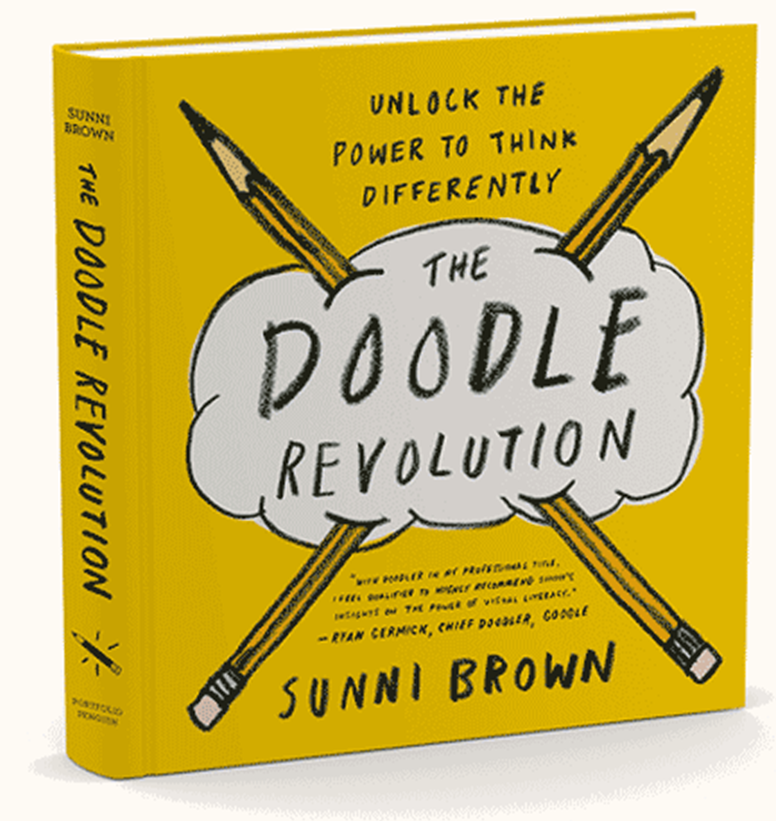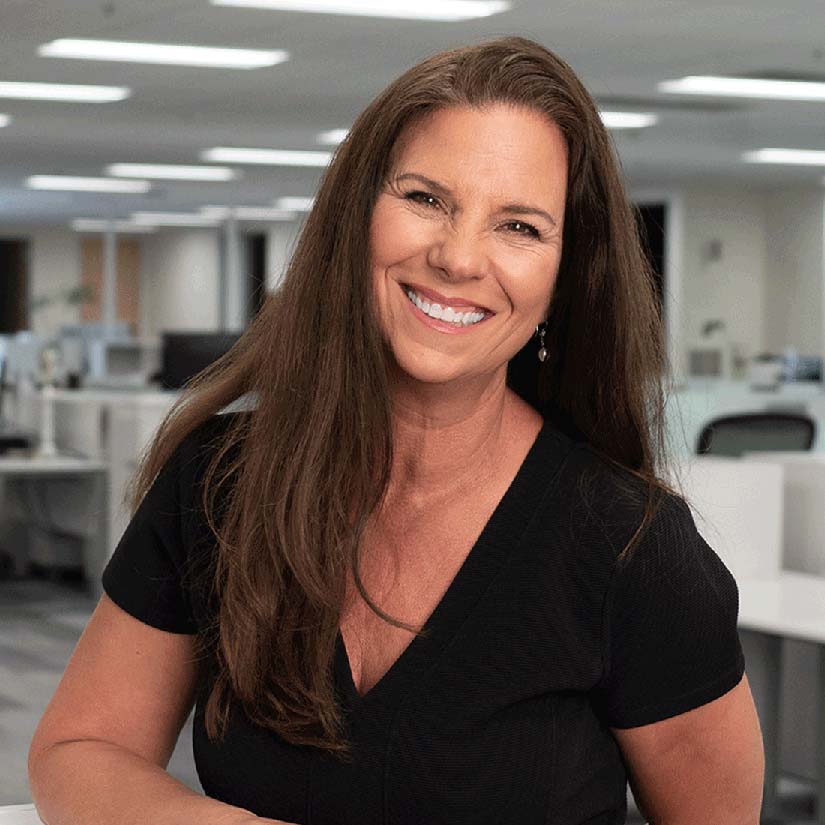Doodlers Unite! A Look at Sunni Brown’s Latest Revolution
 Sunni Brown’s new book, Doodle Revolution, uncovers the power of taking pen to paper. The book aims to change our perception of doodling from inane, nervous habit to a useful practice that has the power to unleash our most creative selves.
Sunni Brown’s new book, Doodle Revolution, uncovers the power of taking pen to paper. The book aims to change our perception of doodling from inane, nervous habit to a useful practice that has the power to unleash our most creative selves.
To do that, Brown shows us the various breakthroughs that have come about through doodling in fields as diverse as technology, architecture, and literature. Her book teaches you how to doodle concepts of all kinds and unlock your ideas.
Sunni is also founder and creative director of Bright Spot and co-author of Gamestorming: A Playbook for Innovators, Rulebreakers and Changemakers. Her TED Talk has nearly 1 million views, and she was named one of Fast Company’s Most Creative People in Business in 2011.
She’s also a really great friend to me personally. Recently, I had the chance to chat with her about her latest book and her creative process.
Nancy: Which section or what message from the book seems to be resonating the best with your readers now?
Sunni: I think probably there’s an underlying message of liberation that I think probably is the most emotionally resonant piece. I could be wrong, but I think that the thing that is most meaningful for people is the permission. It’s like, “Hey, you’re not alone. There are a lot of people like you. In fact, what you’re doing is to be applauded instead of undermined.”
Nancy: You’re a doodler. As a doodler first and a writer second, what was the most difficult part of writing the book?
Sunni: It was hard, Nancy. I’m sure you know. This was my first book that I did by myself as a solo act.
[The publishing process] was hard unexpectedly, but in terms of the creative process, the content flowed. I think I had been hoarding that over time until you become so saturated with the content that it just pours out.
The editing process was really hard. Honestly, it was just emotionally challenging because it meant maybe too much to me. That was a surprise.
Nancy: As you created Doodle Revolution, did you doodle then write, or write then doodle?
Sunni: It was a very integrated and hybrid process. There would be times when I would write 10 pages in a day. But the weird thing was that because words and images influence each other, as you know, sometimes I would be writing, and I would feel compelled to draw something. And I would stop writing, and I would create a random infographic or comic or something.
It was very spontaneous how the two played with each other. That was also surprising because I didn’t know that that would happen either. There was a lot of learning going on.
Nancy: In my own process, the hardest part was striking things that I got emotionally attached to. Was there anything that hit the cutting room floor that you wish had made it in the book?
Sunni: Yes. Definitely. There were some, what I thought were great, illustrations and sort of explanatory comics that didn’t make it. One section got cut. It was a whole section; it was 30 pages.
I was really bummed about it actually, because it was the business case for what I call infodoodling. Had we included it, it would have taken the book to 280 pages, and 251 was my max. It was in my contract. They took that out because their logic was that the book justified it sufficiently so they didn’t think I needed to make the business case.
I started [converting the material into blog posts.] That’s the only way I comforted myself. It’s not dead, but it’s just going to be reformatted somewhere else.
Nancy: You’re a revolutionary. You are the leader of the Doodle Revolution. What is something you’ve had to overcome as you’re trying to pioneer these new mindsets and ideas?
Sunni: It’s very hard to change people’s minds. Your work is committed to finding your narrative story that changes the way people see something. That is not an easy task. That part is hard, and it’s slow going.
That was certainly difficult, but then the other piece I noticed, and I wonder if you had this experience too, is trying to teach someone something without being with them. Learning, in my experience, takes place with very creative mentors. It’s very physical; it’s very active. It’s very much about applying what you know to something tangible.
That has been hard. Inside the book, I try to invite the reader to engage and to participate in exercises and all that. The hardest part is: How do you actually change someone’s mind without being physically in their presence? How do make learning happen?
Nancy: How have you started to see signs of a revolution? Are there any little stories or examples?
Sunni: It’s been around for two months. I get emails from teachers and from UX people and from speakers and presenters. There is not one audience I’ve noticed that is sort of attracted to it. It doesn’t have a specific niche.
All the kids the people write me about, they’re always like, “My kid is amazing, but school is not sufficient for them and the way that they do it.”
I get emails constantly from parents about how the book is helping them rethink the way their child learns, or re-engage their child in a different way. That’s just one little world. There are lots of other little worlds. That’s why you do it, for stuff like that.
Nancy: It’s nice to see that your work is changing the world. You deserve it because you’re awesome! I hope everybody gets Doodle Revolution because it’s really great body of work. Everything is really well thought through, and everything has examples and amazing ways to communicate visually. I hope this continues to get traction. Thank you so much, Sunni.
Learn more about Sunni Brown and Doodle Revolution by:
Buying the book on Amazon here.
Visiting the Doodle Revolution Web site here.
Watching Sunni’s TED Talk here.
TOPICS:
Business
Learn from the pros
Gain insight on effective presentation strategies
From developing presentation skills to designing PowerPoint® presentations, we invite you to join the 200,000 people who leverage our extensive resource library.

